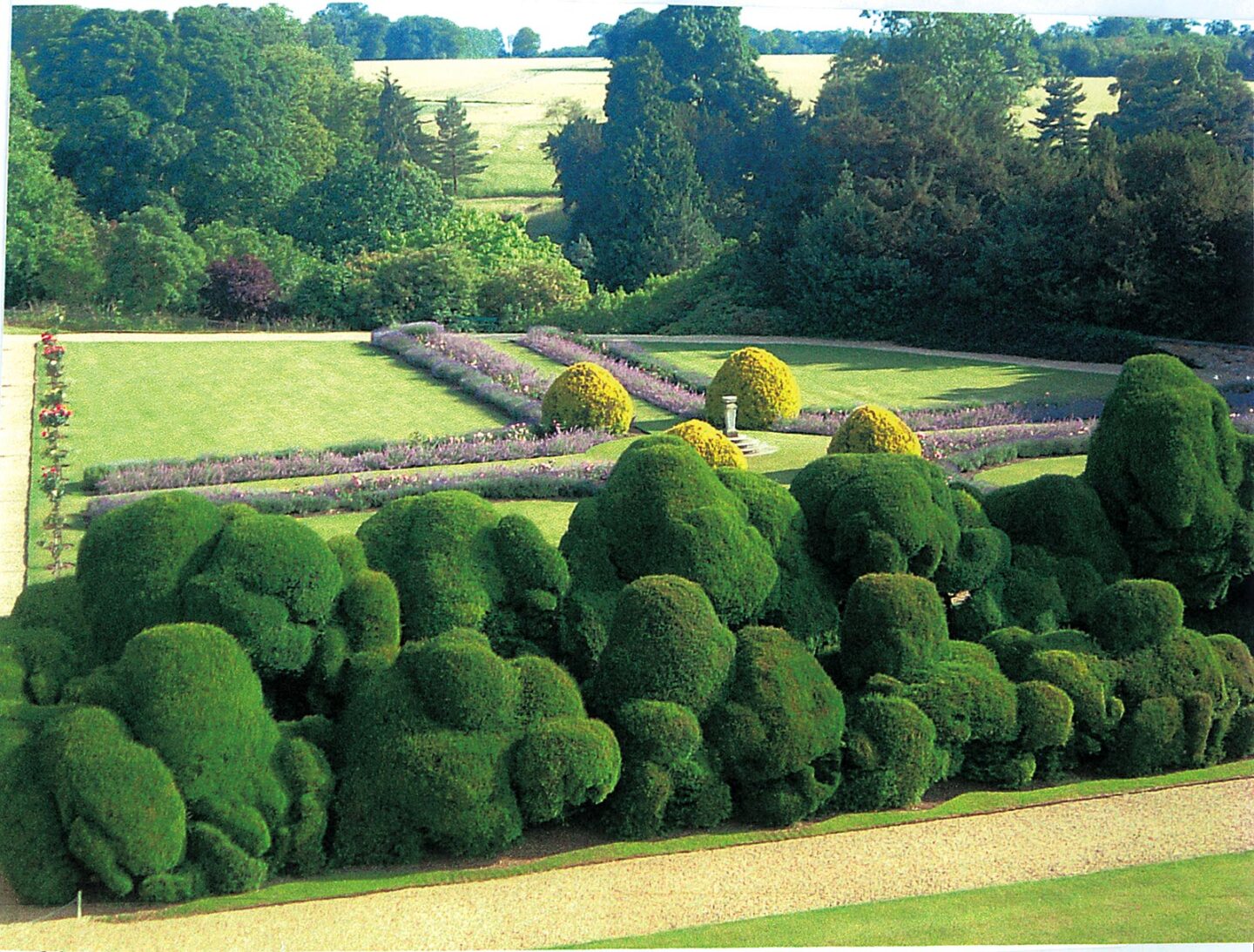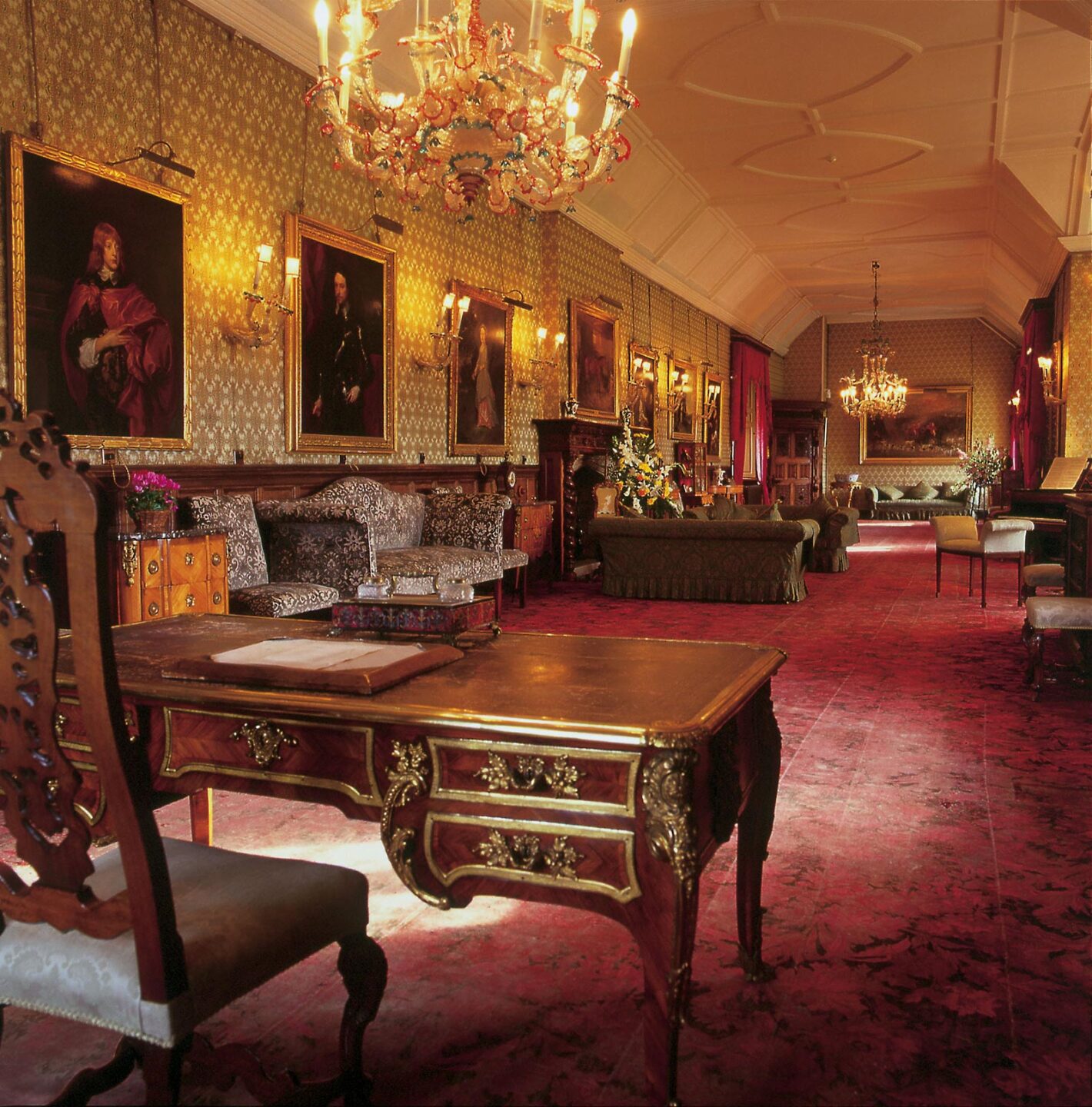In the spirit of World Book Day we thought we would share with you some information about Charles Dickens and his connections to Rockingham Castle.
During the Victorian era, Richard and Lavinia Watson entertained here in style and among their guests was their great friend Charles Dickens. This friendship with Richard and Lavinia Watson led him to visit Rockingham Castle on several occasions and often performed in his own plays in the Panel Room. Dickens once wrote “I always think of Rockingham, after coming away, as if I belonged to it and had left a bit of my heart behind.” [Letter from Dickens to Lavinia Watson, 24 January 1851]. His adoration for Rockingham inspired many of his novels including Chesney Wold in his novel Bleak House.
Bleak House (1852-53)
“He had never before stayed at so grand a place as Rockingham, and had never before Bleak House needed for his fiction a house so large and historic as Chesney Wold.” [Philip Collins] In 1853 Dickens wrote to Lavinia,
“In some descriptions of Chesney Wold I have taken many bits, chiefly about trees and shadows, from observations made at Rockingham. I wonder whether you have ever thought so!”
The editors of the Pilgrim edition of Dickens’s letters suggest that he in fact understated how much he had borrowed from Rockingham. Walter Dexter wrote, “All authorities agree that Lady Dedlock’s ‘place in Lincolnshire’ [Chesney Wold] in Bleak House was founded on Rockingham Castle in the neighbouring county.” Dickens’s biographer, Fred Kaplan, writes, “Rockingham was transformed into Chesney”. It is in no way identical to Rockingham, and the Dedlocks are not based on the Watsons, but there are many echoes and coincidences.
Chesney Wold, unlike Rockingham, is surrounded by the Lincolnshire Fens, but at Rockingham the valley of the river Welland below the castle is often flooded in winter and this might have suggested the watery surroundings of Chesney Wold.
In Bleak House Esther Summerson on her first visit to Chesney Wold arrives at a market town that could well be Market Harborough.
“Late in the afternoon we came to the market-town where we were to alight from the coach – a dull little town with a church-spire, and a market place.” [Market Harborough still has a fine market place and church spire] There she was met and taken to Chesney Wold, at last reaching the village below it. “We came into the little village, and passed a small inn with the sign of the Dedlock Arms swinging over the road in front.”
This description, of “a hilly little street” fits the village of Rockingham and in it the Sondes Arms, still the village pub today.
As Dickens says above, the gardens of Rockingham feature in Bleak House. Esther Summerson describes Chesney Wold as
“a picturesque old house, in a fine park richly wooded … the smooth green slopes … the garden where the flowers were so symmetrically arranged … The house with gable and chimney, tower and turret, and dark doorway and broad terrace-walk.”
At Rockingham you can still walk out on the terrace lawn, look up at the tower and turret, and look down on the green slopes sweeping down from the old outer walls of the castle. In Bleak House Esther Summerson describes, “a favourite spot of mine in the park-woods of Chesney Wold” on high ground with a bank of violets and a view of the house, which fits very well with a spot on the far side of the Wild Garden at Rockingham.
The terrace ends at Rockingham in the ancient yew hedge known as the Elephant Hedge. This is in fact two parallel hedges and looking along the gap between them is the first floor room in which Dickens is said to have stayed. He used the Elephant Walk as the model, though without the stone paving, for the Ghost’s Walk in Bleak House. Dickens mentions The Ghost’s Walk as being, “touched at the western corner by a pile of fire in the sky.” Likewise at Rockingham the setting sun lights up the western end of the Elephant Hedge. The Ghost’s Walk in Bleak House got its name from an incident in the Civil War that echoes what Dickens knew of what had happened to Sir Lewis Watson at Rockingham. Sir Marbury Dedlock was royalist, but his wife was parliamentarian; at Rockingham Sir Lewis Watson was royalist, but his wife came from the Parliamentarian Manners family. Fearing that his wife was harming horses so that the royalists could not use them, Sir Marbury struggled with her, causing her to fall, injuring her hip. A few weeks later she collapsed and died in what was thereafter called the Ghost’s Walk.


Chesney Wold is approached via a gateway, based on the drum towers at Rockingham, which leads into a courtyard facing the long drawing room, containing family portraits, which is based on the Long Gallery at Rockingham. Dickens described Sir Leicester Dedlock,
“in a flush of crimson and gold, in the midst of the great drawing room … with broad strips of sunlight shining in, down the long perspective”
– an apt description of Rockingham’s Long Gallery, especially when the evening sun slants across the pictures on the left of the photograph above. An early edition of the novel used an engraving of the Long Gallery to represent this Drawing Room.
Richard Watson added the Flag Tower to the Long Gallery on the terrace side; part way up the tower is a small room which Dickens used as the model for the room in which the lawyer Mr Tulkinghorne stayed when he visited Chesney Wold. Dickens wrote,
“He sleeps in his turret, with a complaining flagstaff over his head … and has some leads outside, on which any fine morning when he is down here … his black figure may be seen walking.”
At Chesney Wold the
“shady, ancient, solemn little church in the park”
is reached by a pathway from the village, as is the church at Rockingham. Dickens writes,
“ On Sundays the little church in the park is mouldy; the oaken pulpit breaks out into a cold sweat; and there is a general smell and taste as of the ancient Dedlocks in their graves.”
Rockingham church is not mouldy, but does contain a number of Watson family tombs and monuments
Finally, in Bleak House Chesney Wold is run by the formidable old housekeeper, Mrs Rouncewell,
“a fine old lady, handsome, stately, wonderfully neat … she has only been here fifty years”.
There are echoes here of Mrs Champion the “enormously fat housekeeper” Dickens referred to on his visit to stage a play at Rockingham in 1849. She held a position of great responsibility, and had her own large room overlooking the courtyard (now the Muniments room, opposite the Kitchen). A sign of her standing is the notice, which is still there, that she had put up outside the Kitchen door: “No person Whether belonging to the Family or Not, is ever under any pretext to enter the Kitchen without obtaining leave. RING the BELL”.
Written by David Shipton, Head Guide at Rockingham Castle.
This extract has been taken from the booklet Charles Dickens and Rockingham, which gives a full account of his friendship with the Watson Family, together with details of his various visits to the Castle, the theatrical performances he instigated there, and the Castle’s significance in the content of his novels, including David Copperfield, A Christmas Tree, and Little Dorrit. This is on sale in the Gift Shop at Rockingham Castle.
The Castle will open for the season on Easter Sunday for our Children’s Easter Hunt. Open 12 noon – 5pm. Grounds open at 12 noon. Castle opens at 1pm.